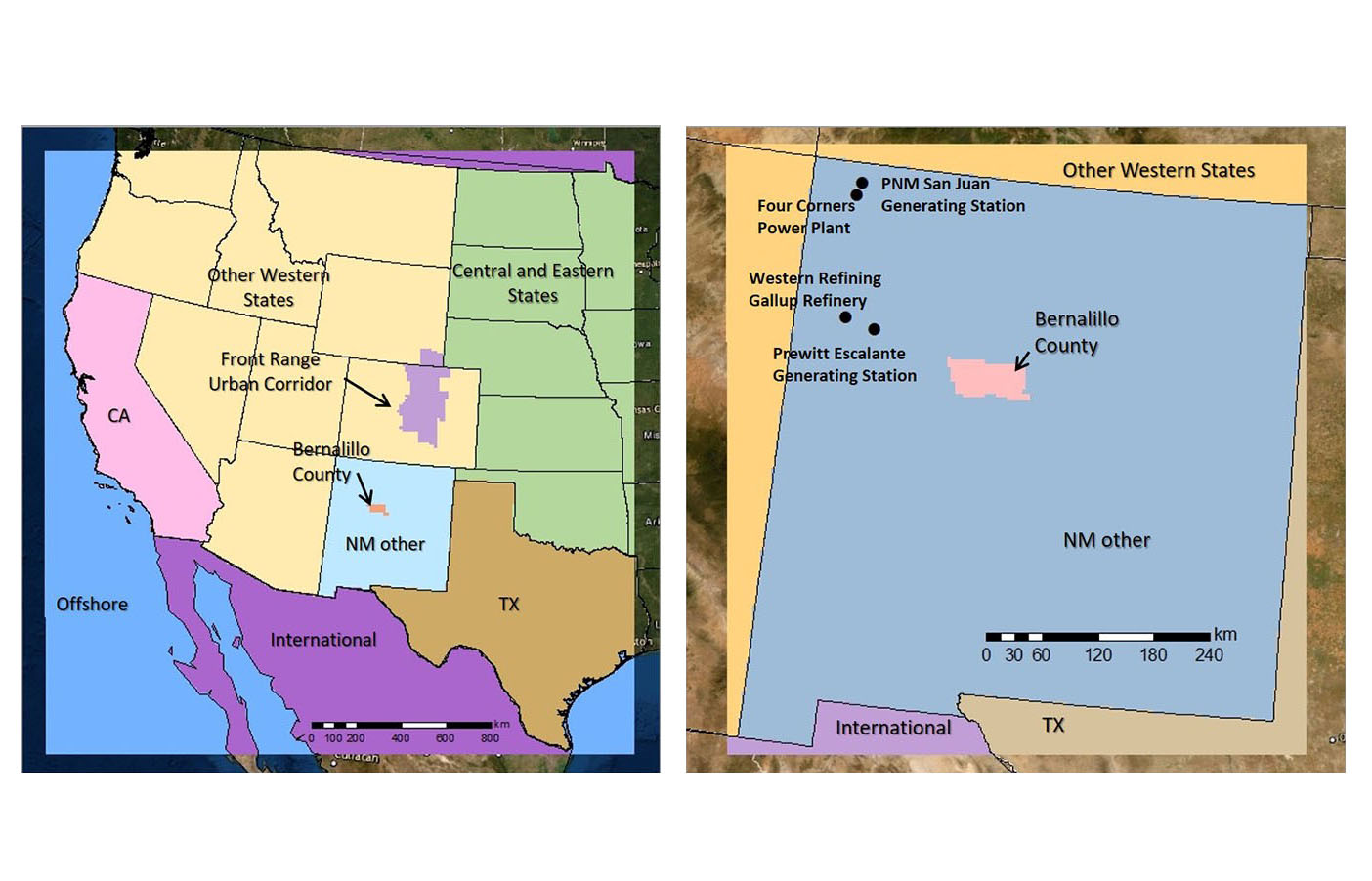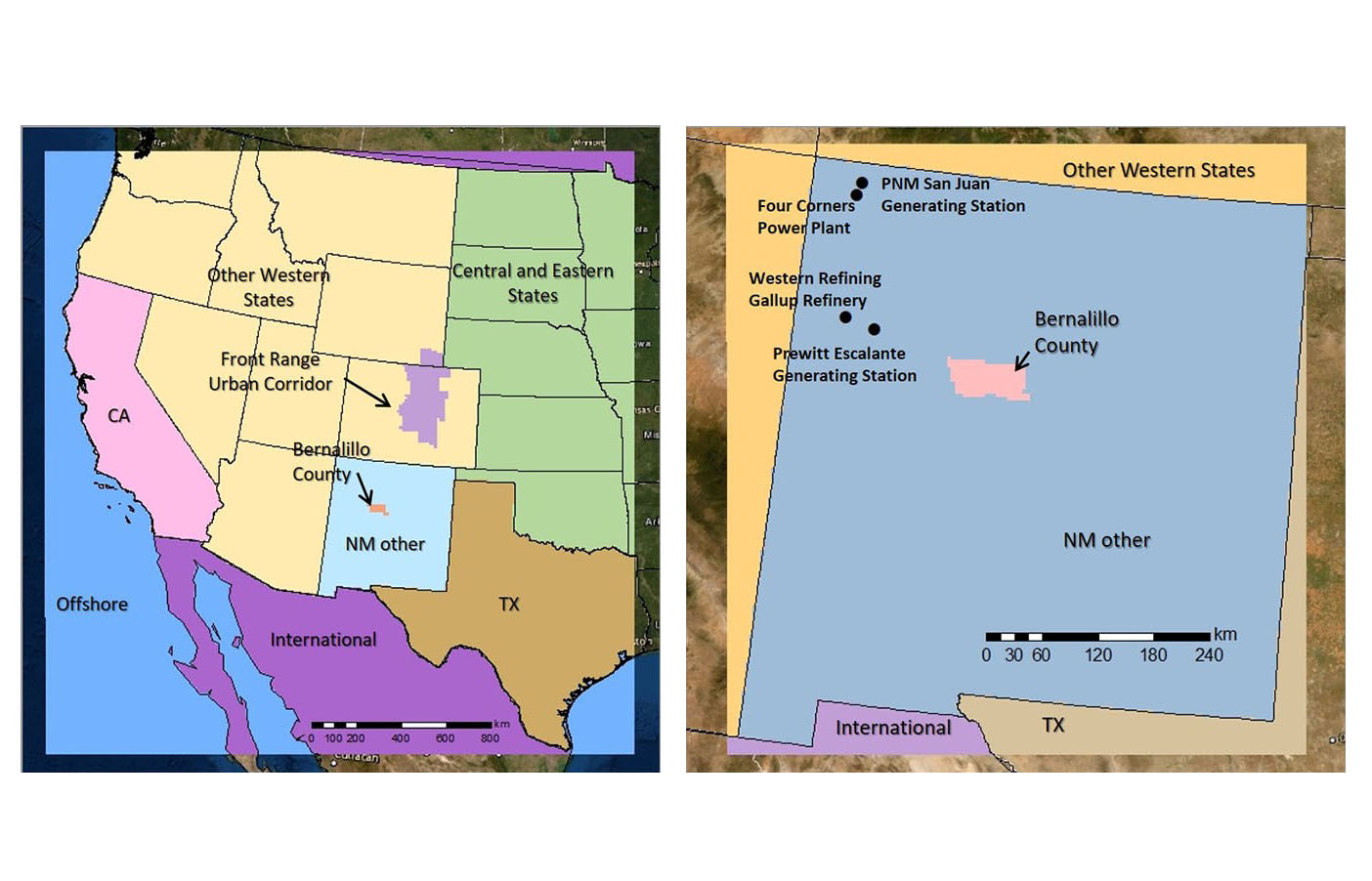Journal Article: Air Quality and Source Apportionment Modeling of Ozone Episodes in New Mexico
Clients
Albuquerque Environmental Health Department (AEHD)
Ozone pollution levels in Albuquerque, New Mexico, have increased in recent years, and AEHD retained Sonoma Technology to conduct air quality modeling to better understand ozone sources across both the City and Bernalillo County. Sonoma Technology scientists conducted modeling using the Comprehensive Air Quality Model with Extension (CAMx) to understand source apportionment in the region, estimate ozone concentrations in the year 2025, and evaluate the sensitivity of future ozone concentrations to changes in local and non-local emissions.</p>
The results of this study were published in the <a href="https://www.tandfonline.com/doi/abs/10.1080/10962247.2020.1764879?journalCode=uawm20" target="_blank">Journal of the Air & Waste Management Association.</a href></p>
The full abstract of the article is below.<br>
Albuquerque/Bernalillo County, New Mexico, is currently in attainment of the 2015 National Ambient Air Quality Standard (NAAQS) for ozone (70 ppb), but its ozone design values have increased in recent years. Sonoma Technology scientists used the CAMx model to run air quality and source apportionment modeling for Albuquerque/Bernalillo County to develop a refined understanding of ozone source apportionment in the region, estimate ozone concentrations in the year 2025 based on projected changes in anthropogenic emissions, and evaluate the sensitivity of future ozone concentrations to various changes in local and non-local emissions. The study focused on two ozone episodes during June and July 2017 when 8-hr average ozone concentrations were greater than 70 ppb. Based on the modeling results, ozone during the June 2017 episode was found to be driven largely by contributions from non-local and regional emissions, whereas ozone during the July 2017 episode was driven more strongly by local emissions from within Albuquerque/Bernalillo County. On high ozone days, anthropogenic emissions from within Albuquerque/Bernalillo County contributed between 8% and 19% (6-14 ppb) of total ozone. Half of this local ozone contribution was from on-road mobile sources. Fire emissions contributed as much as 2 ppb of ozone on a given day. Contributions from large power plants in New Mexico were as large as 1 ppb on a given day but less than 0.5 ppb on most days. Modeled ozone concentrations in Albuquerque/Bernalillo County were also sensitive to emissions from oil and gas emissions in New Mexico. If projected emission reductions by 2025 materialize, these reductions could reduce future peak 8-hr average ozone concentrations by as much as 3-4% compared to 2017 values.
The results of this study were published in the <a href="https://www.tandfonline.com/doi/abs/10.1080/10962247.2020.1764879?journalCode=uawm20" target="_blank">Journal of the Air & Waste Management Association.</a href></p>
The full abstract of the article is below.<br>
Albuquerque/Bernalillo County, New Mexico, is currently in attainment of the 2015 National Ambient Air Quality Standard (NAAQS) for ozone (70 ppb), but its ozone design values have increased in recent years. Sonoma Technology scientists used the CAMx model to run air quality and source apportionment modeling for Albuquerque/Bernalillo County to develop a refined understanding of ozone source apportionment in the region, estimate ozone concentrations in the year 2025 based on projected changes in anthropogenic emissions, and evaluate the sensitivity of future ozone concentrations to various changes in local and non-local emissions. The study focused on two ozone episodes during June and July 2017 when 8-hr average ozone concentrations were greater than 70 ppb. Based on the modeling results, ozone during the June 2017 episode was found to be driven largely by contributions from non-local and regional emissions, whereas ozone during the July 2017 episode was driven more strongly by local emissions from within Albuquerque/Bernalillo County. On high ozone days, anthropogenic emissions from within Albuquerque/Bernalillo County contributed between 8% and 19% (6-14 ppb) of total ozone. Half of this local ozone contribution was from on-road mobile sources. Fire emissions contributed as much as 2 ppb of ozone on a given day. Contributions from large power plants in New Mexico were as large as 1 ppb on a given day but less than 0.5 ppb on most days. Modeled ozone concentrations in Albuquerque/Bernalillo County were also sensitive to emissions from oil and gas emissions in New Mexico. If projected emission reductions by 2025 materialize, these reductions could reduce future peak 8-hr average ozone concentrations by as much as 3-4% compared to 2017 values.
Air Quality
Applied Research
Climate
Emissions
Health
Measurements
Modeling


Kenneth J. Craig

Kenneth
J.
Craig
Manager, Atmospheric and Emissions Modeling Group / Principal Scientist
kcraig@sonomatech.com
/sites/default/files/2023-02/KJCres.pdf
